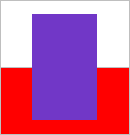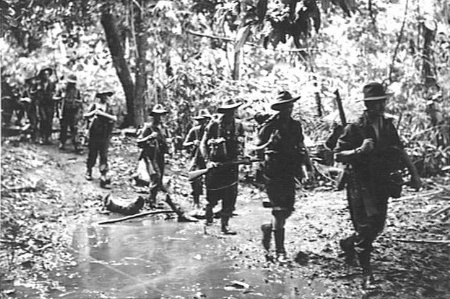|
Nunzen, Papua New Guinea
Nunzen is a village located on the northern coast of Huon Peninsula, Papua New Guinea. It is located in Sialum Rural LLG, Morobe Province. History The town was occupied by Imperial Japanese forces during World War II until they were defeated in the Huon Peninsula Campaign. The village was the site of brief fighting in December 1943 as the Japanese 20th Division retreated toward Sio with the Australian 9th Division and Papuan Infantry Battalion in pursuit. The head office of the Bakesu Revival Church is located in the neighborhood of Menyamen. The Bakesu Revival Church is an Ono-language Christian revival church which split from the Evangelical Lutheran Church of Papua New Guinea The Evangelical Lutheran Church of Papua New Guinea is a Protestant church denomination located in Papua New Guinea that professes the Lutheran branch of the Christian faith. The Church is incorporated by a 1991 Act of the Parliament of Papua New ... in 1988. References Populated places in Mor ... [...More Info...] [...Related Items...] OR: [Wikipedia] [Google] [Baidu] |
Papua New Guinea
Papua New Guinea (abbreviated PNG; , ; tpi, Papua Niugini; ho, Papua Niu Gini), officially the Independent State of Papua New Guinea ( tpi, Independen Stet bilong Papua Niugini; ho, Independen Stet bilong Papua Niu Gini), is a country in Oceania that comprises the eastern half of the island of New Guinea and its offshore islands in Melanesia (a region of the southwestern Pacific Ocean north of Australia). Its capital, located along its southeastern coast, is Port Moresby. The country is the world's third largest island country, with an area of . At the national level, after being ruled by three external powers since 1884, including nearly 60 years of Australian administration starting during World War I, Papua New Guinea established its sovereignty in 1975. It became an independent Commonwealth realm in 1975 with Elizabeth II as its queen. It also became a member of the Commonwealth of Nations in its own right. There are 839 known languages of Papua New Guinea, one of ... [...More Info...] [...Related Items...] OR: [Wikipedia] [Google] [Baidu] |
Imperial Japanese Army
The was the official ground-based armed force of the Empire of Japan from 1868 to 1945. It was controlled by the Imperial Japanese Army General Staff Office and the Ministry of the Army, both of which were nominally subordinate to the Emperor of Japan as supreme commander of the army and the Imperial Japanese Navy. Later an Inspectorate General of Aviation became the third agency with oversight of the army. During wartime or national emergencies, the nominal command functions of the emperor would be centralized in an Imperial General Headquarters (IGHQ), an ad hoc body consisting of the chief and vice chief of the Army General Staff, the Minister of the Army, the chief and vice chief of the Naval General Staff, the Inspector General of Aviation, and the Inspector General of Military Training. History Origins (1868–1871) In the mid-19th century, Japan had no unified national army and the country was made up of feudal domains (''han'') with the Tokugawa shogunate (''bakufu ... [...More Info...] [...Related Items...] OR: [Wikipedia] [Google] [Baidu] |
Papuan Infantry Battalion
The Papuan Infantry Battalion (PIB) was a unit of the Australian Army raised in the Territory of Papua for service during the Second World War. Formed in early 1940 in Port Moresby to help defend the territory in the event of a Japanese invasion, its soldiers were primarily Papuan natives led by Australian officers and non-commissioned officers. Following the outbreak of the Pacific War, the PIB served in many of the Allied campaigns in New Guinea; however, due to the nature of its role its sub-units mainly operated separately, attached to larger Australian and US Army units and formations. Slow in forming, the first members of the PIB were not officially posted in until March 1941. By 1942 it consisted of only three companies, all of which were under-strength and poorly equipped. It was subsequently employed on scouting, reconnaissance and surveillance patrols against the Japanese, where the natural bushcraft of its native soldiers could be used to their advantage. The PIB was se ... [...More Info...] [...Related Items...] OR: [Wikipedia] [Google] [Baidu] |
9th Division (Australia)
The 9th Division was a division of the Australian Army that served during World War II. It was the fourth division raised for the Second Australian Imperial Force (2nd AIF). The distinctions of the division include it being: * in front line combat longer, cumulatively, than any other Australian division;Johnston (2002), p. ix. * one of the Australian military's most decorated formations; * the only 2nd AIF division formed in the United Kingdom, from infantry brigades and support units formed in Australia; * praised by both Allied and Axis generals, including Bernard Montgomery and Erwin Rommel, as well as non-Australian military historians, and; * like the 6th and 7th Divisions, being one of only a few Allied army units to serve in both the Mediterranean and Pacific theatres. During 1940, the component units of the 9th Division were sent to the UK to defend it against a possible German invasion. After serving during 1941–1942 in the North African campaign, at the Sieg ... [...More Info...] [...Related Items...] OR: [Wikipedia] [Google] [Baidu] |
Battle Of Sio
The Battle of Sio, fought between December 1943 and March 1944, was the break-out and pursuit phase of General Douglas MacArthur's Huon Peninsula campaign, part of the New Guinea campaign of World War II. After the defeat of the Japanese in the Battle of Sattelberg, Australian Army forces broke through the Japanese positions around Finschhafen. Constant pressure from US Navy PT boats, Australian land forces and Allied aircraft brought the Japanese logistical system to the brink of collapse, resulting in disease, malnutrition, and privation for the Japanese soldiers. Meanwhile, the Allied supply system grappled with the problems of terrain and climate, particularly inclement weather and rough monsoonal seas that hampered and occasionally prevented delivery of supplies by sea. Australian and Papuan troops advanced along the coast of the Huon Peninsula, using infantry, tanks, and air strikes against the Japanese positions, which were generally sited at creek crossings in the jungl ... [...More Info...] [...Related Items...] OR: [Wikipedia] [Google] [Baidu] |
20th Division (Imperial Japanese Army)
The was an infantry division in the Imperial Japanese Army. Its tsūshōgō code name was the . Formation The 20th Division and the 19th Division were both raised as a garrison force for Korea. After Japan's victory in the Russo-Japanese War of 1904–1905, and subsequent occupation, and then annexation of Korea in 1910, the need was felt for a dedicated garrison force, raised from people with local knowledge. The 20th Division was stationed in central Korea, in what is now Yongsan District, Seoul. The division received its colors on 24 December 1915; however, the division was not considered combat-ready until 1918, and divisional headquarters were co-located with the division only from the 1 April 1919. The delay was due to limited funding available for the division to build its facilities in Korea and the need to recruit and train personnel from mainland Japan. The first commander of the 19th Division was Lieutenant General Tachibana Koichirō. Action After the Mukden I ... [...More Info...] [...Related Items...] OR: [Wikipedia] [Google] [Baidu] |
Huon Peninsula Campaign
The Huon Peninsula campaign was a series of battles fought in north-eastern Papua New Guinea in 1943–1944 during the Second World War. The campaign formed the initial part of an offensive that the Allies launched in the Pacific in late 1943 and resulted in the Japanese being pushed north from Lae to Sio on the northern coast of New Guinea over the course of a four-month period. For the Australians, a significant advantage was gained through the technological edge that Allied industry had achieved over the Japanese by this phase of the war, while the Japanese were hampered by a lack of supplies and reinforcements due to Allied interdiction efforts at sea and in the air. The campaign was preceded by an amphibious landing by troops from the Australian 9th Division east of Lae on 4 September 1943. This was followed by an advance west along the coast towards the town where they were to link up with 7th Division advancing from Nadzab. Meanwhile, Australian and US forces mounted ... [...More Info...] [...Related Items...] OR: [Wikipedia] [Google] [Baidu] |
Sialum Rural LLG
Sialum Rural LLG is a local-level government (LLG) of Morobe Province, Papua New Guinea. Wards *01. Gitua *02. Kumukio *03. Sialum (Sialum language Sialum is a Papuan language of Sialum Rural LLG (), Morobe Province, Papua New Guinea Papua New Guinea (abbreviated PNG; , ; tpi, Papua Niugini; ho, Papua Niu Gini), officially the Independent State of Papua New Guinea ( tpi, Indepen ... speakers) *04. Gitukia *05. Kukuya *06. Kangkeu *07. Rua *08. Nungen (including the village of Nunzen) *09. Kanome *10. Ririwo *11. Karako *12. Zankoa *13. Wandokai *14. Walingai *15. Rebafu *16. Zange Fifi *17. Zuzumau *18. Masa *19. Kingarenau *20. Siwea References * * Local-level governments of Morobe Province {{MorobeProvince-geo-stub ... [...More Info...] [...Related Items...] OR: [Wikipedia] [Google] [Baidu] |
Provinces Of Papua New Guinea
For administrative purposes, Papua New Guinea is divided into administrative divisions Administrative division, administrative unit,Article 3(1). country subdivision, administrative region, subnational entity, constituent state, as well as many similar terms, are generic names for geographical areas into which a particular, ind ... called provinces. There are 22 provincial-level divisions, which include #List of provinces, 20 provinces, the Autonomous Region of Bougainville, and the National Capital District (Papua New Guinea), National Capital District of Port Moresby. In 2009, the National Parliament of Papua New Guinea created two additional provinces, that officially came into being on 17 May 2012. [...More Info...] [...Related Items...] OR: [Wikipedia] [Google] [Baidu] |
Huon Peninsula
Huon Peninsula is a large rugged peninsula on the island of New Guinea in Morobe Province, eastern Papua New Guinea. It is named after French explorer Jean-Michel Huon de Kermadec. The peninsula is dominated by the steep Saruwaged and Finisterre and Cromwell Mountains. The nearest large town is the Morobe provincial capital Lae to the south, while settlements on the north coast include the former German town of Finschhafen, the district capital of Wasu, Malalamai and Saidor with its World War II era Saidor Airport. The area was the site of the Huon Peninsula campaign of World War II, in 1943-44 as Japanese troops retreating from Lae fought their way over the Finisterre Mountains to Madang on the north coast. Flora and fauna The rainforests that cover these remote mountains provide habitats for many birds and animals and have been designated the Huon Peninsula montane rain forests ecoregion. The rainforest of the hillsides consists of shorter trees and more herbs than you w ... [...More Info...] [...Related Items...] OR: [Wikipedia] [Google] [Baidu] |
Time In Australia
Australia uses three main time zones: Australian Western Standard Time (AWST; UTC+08:00), Australian Central Standard Time (ACST; UTC+09:30), and Australian Eastern Standard Time (AEST; UTC+10:00). Time is regulated by the individual state governments, some of which observe daylight saving time (DST). Australia's external territories observe different time zones. Standard time was introduced in the 1890s when all of the Australian colonies adopted it. Before the switch to standard time zones, each local city or town was free to determine its local time, called local mean time. Now, Western Australia uses Western Standard Time; South Australia and the Northern Territory use Central Standard Time; while New South Wales, Queensland, Tasmania, Victoria, Jervis Bay Territory, and the Australian Capital Territory use Eastern Standard Time. Daylight saving time (+1 hour) is used in jurisdictions in the south and south-east: South Australia, New South Wales, Victoria, Tasmania, Je ... [...More Info...] [...Related Items...] OR: [Wikipedia] [Google] [Baidu] |


.jpg)
